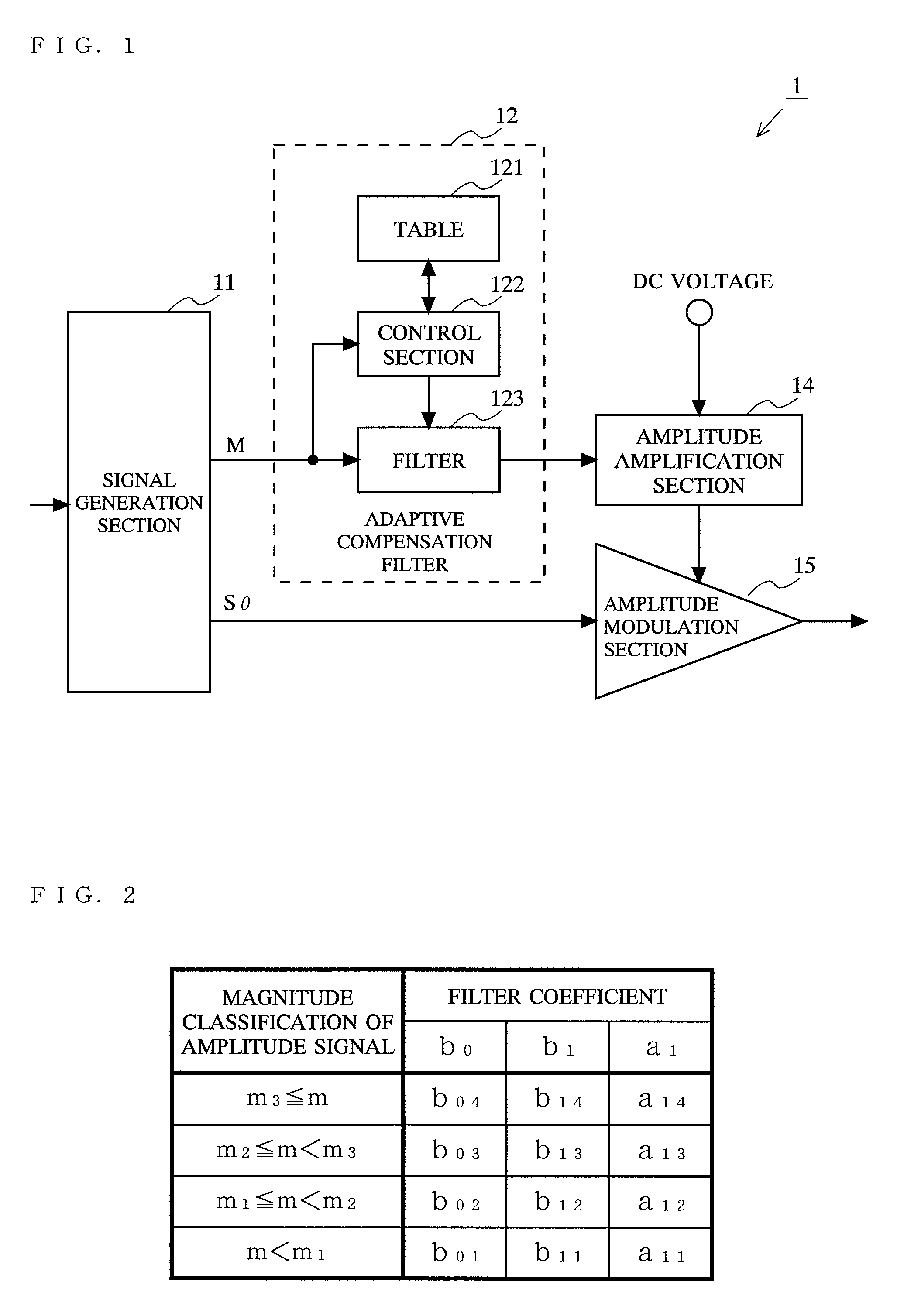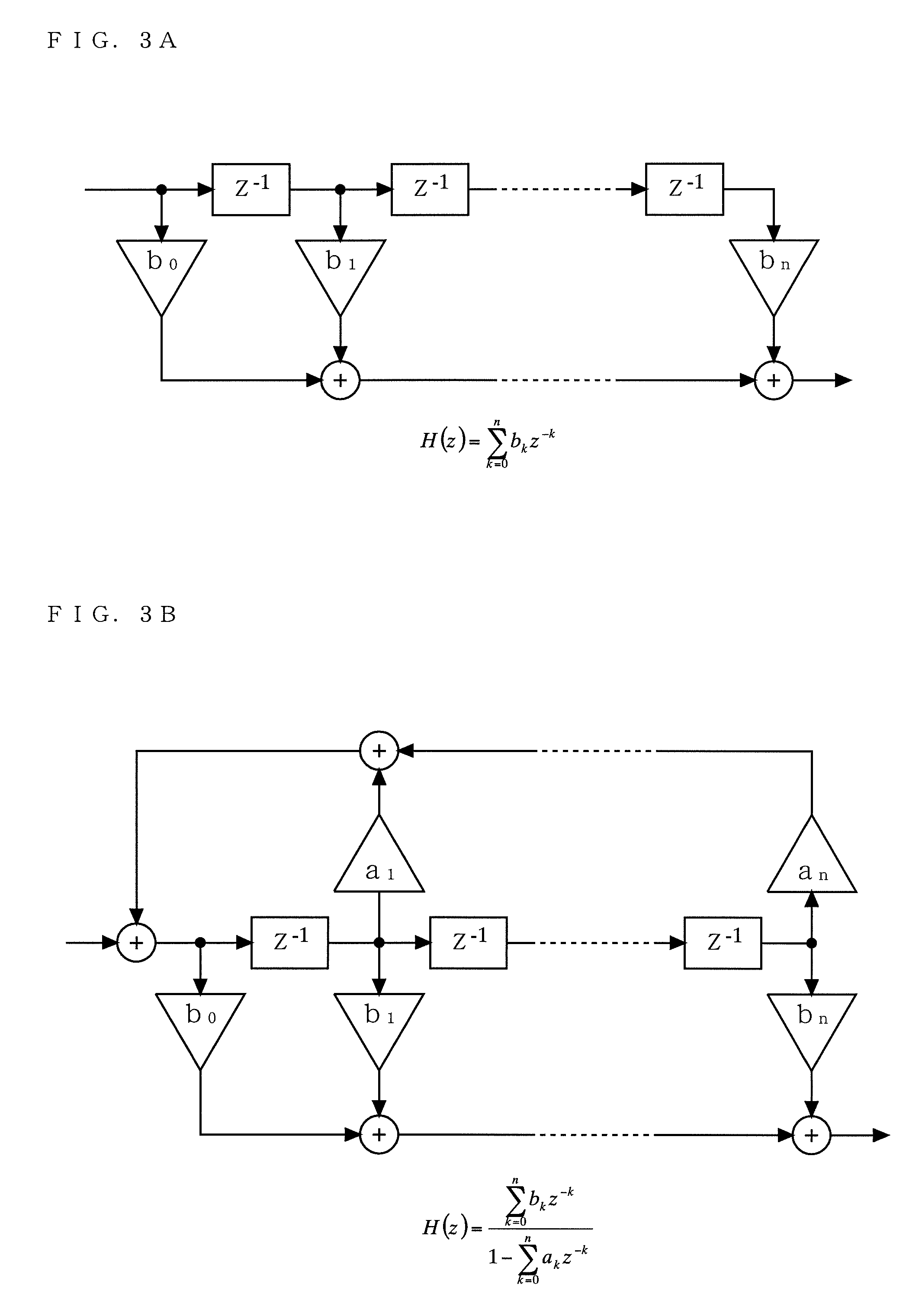Transmitter and communication apparatus
- Summary
- Abstract
- Description
- Claims
- Application Information
AI Technical Summary
Benefits of technology
Problems solved by technology
Method used
Image
Examples
first embodiment
[0051]FIG. 1 is a diagram showing the structure of a transmitter 1 according to a first embodiment of the present invention. Referring to FIG. 1, the transmitter 1 includes a signal generation section 11, an adaptive compensation filter 12, an amplitude amplification section 14, and an amplitude modulation section 15. The adaptive compensation filter 12 includes a table 121, a control section 122, and a filter 123.
[0052]The signal generation section 11 outputs an amplitude signal M and an angle-modulated signal Sθ based on an amplitude component and a phase component that are obtained by performing signal processing on input data. The amplitude signal M is subjected to waveform shaping corresponding to the magnitude of the amplitude signal M in the adaptive compensation filter 12 and then is inputted to the amplitude amplification section 14. The amplitude amplification section 14 outputs a signal controlled by the inputted amplitude signal. Typically, the amplitude amplification se...
second embodiment
[0073]FIG. 10 is a diagram showing the structure of a transmitter 2 according to a second embodiment of the present invention. Referring to FIG. 10, the transmitter 2 includes a signal generation section 21, a multiplication section 23, an adaptive compensation filter 12, an amplitude amplification section 14, and an amplitude modulation section 15. The adaptive compensation filter 12 includes a table 121, a control section 122, and a filter 123.
[0074]The transmitter 2 according to the second embodiment is different from the transmitter 1 according to the first embodiment in that the transmitter 2 has the signal generation section 21 and the multiplication section 23. These different components of the transmitter 2 will be described below, while the same components as those of the transmitter 1 will be denoted by the same numerals and will not be described.
[0075]The signal generation section 21 outputs power information P set based on a baseband, as well as outputting an amplitude s...
third embodiment
[0077]FIG. 11 is a diagram showing the structure of a transmitter 3 according to a third embodiment of the present invention. Referring to FIG. 11, the transmitter 3 includes a signal generation section 21, an adaptive compensation filter 32, a multiplication section 33, an amplitude amplification section 14, and an amplitude modulation section 15. The adaptive compensation filter 32 includes a table 321, a control section 322, and a filter 323.
[0078]The transmitter 3 according to the third embodiment is different from the transmitter 2 according to the second embodiment in that the transmitter 3 has the adaptive compensation filter 32 and the multiplication section 33. These different components of the transmitter 3 will be described below, while the same components as those of the transmitters 1 and 2 will be denoted by the same numerals and will not be described.
[0079]In the table 321, the filter coefficients used by the filter 323 are each stored in accordance with the power inf...
PUM
 Login to View More
Login to View More Abstract
Description
Claims
Application Information
 Login to View More
Login to View More - R&D
- Intellectual Property
- Life Sciences
- Materials
- Tech Scout
- Unparalleled Data Quality
- Higher Quality Content
- 60% Fewer Hallucinations
Browse by: Latest US Patents, China's latest patents, Technical Efficacy Thesaurus, Application Domain, Technology Topic, Popular Technical Reports.
© 2025 PatSnap. All rights reserved.Legal|Privacy policy|Modern Slavery Act Transparency Statement|Sitemap|About US| Contact US: help@patsnap.com



